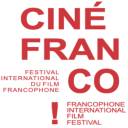- Details
-
Category: Cinéma - Movies
-
Published: Thursday, 21 November 2019 02:53
-
Written by Gilbert Seah
Cinefranco 2019
Cinefranco 2019 runs from November 22 to the 30th 2019. Programmed and run by the tireless and ever-cheerful Marcelle Lean (who I am proud to say is a good acquaintance of mine) since the fete first started.
The Festival’s Main Program is the most important international francophone film festivals in English Canada. It is comprised of up to 40 francophone films and brings together thousands of fans. The films reflect the richness and diversity of filmmakers from Canada, France, Belgium, Switzerland, Algeria, Morocco. Tunisia, Senegal and other countries. The goal of this program is to showcase films rarely seen or not distributed in Toronto cinemas. Considering that fewer and fewer French films are being released (such a pity) in theatres, Cinéfranco provides an essential platform to foster the appreciation of francophone films. Therefore, Cinéfranco gives the unique opportunity for francophone film lovers to experience the films on a big screen, and for filmmakers to meet their audiences. Cinéfranco provides popular yet quality programming, from hilarious comedies to social dramas, through moving documentaries or captivating thrillers. The viewers get to vote for their favourite film which is awarded “The Audience Prize” at the end of the festival.
For complete information of the festival including descriptions of the films, please click the Link:
https://www.cinefranco.com/fall-festival
Capsule Reviews of Selected Films:
Un Amour Impossible (France 2018) ****
Directed by Catherine Corsini
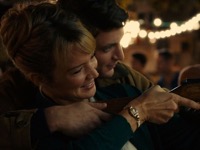
Don’t let the title put you off. This is no cheap riff-off of a ROMEO AND JULIET story. UN AMOUR IMPOSSIBLE is an incredible emotional and intelligent romance so dark yet beautiful that will surely affect many couples for the fact that the story can be or might be more common than expected. The story follows a couple very much into each other. The girl, Rachel (Virginia Efira) is very much head over heals in love with utterly handsome Philippe (Neils Schneider). The romance is shown from Rachel’s POV as love at first sight, perfect love, with a totally handsome beau with excellent sex. Until he unloads the bomb on her, that he does not want to be wed. Worst still, when she reveals her pregnancy, he travels to Italy. The narrator of the story is the daughter of the couple. Nothing more should be revealed of the story but this is one remarkable romantic drama that will affect both sexes and the daughter. How often than not that we have (myself included) fallen in love with someone who is so attractive that he or she can attract anyone else at any time. What can one do? The most emotional part occurs in one scene where she stares at him: He is so abusive to her, but she is so much in love with him that she does nothing. The film runs more than 2 hours, but every minute is worth its time.
Trailerhttps://ca.video.search.yahoo.com/yhs/search?fr=yhs-dcola-005&hsimp=yhs-005&hspart=dcola&p=allocine+un+amour+impossible#id=51&vid=287300ffc47760d54dea41402d815079&action=view
LE MYSTERE HENRI PICK (The Mystery of Henri Pick) (France 2019) ***1/2
Directed by Remi Bezancon
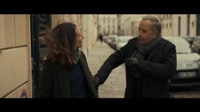
A bold inventive comedy that is ripe for Hollywood to remake. While conducting a television interview with the widow of pizza restaurateur Henri Pick, who is the posthumous author of a bestseller, talk show host Jean-Michel Rouche (Fabrice Luchini) attracts the wrath of his employer and the spectators by suggesting the book could be a sham. The same evening, his wife leaves him and he is fired from his job at the network. This double disgrace reinforces his desire to prove that he is right. As Rouche acts not only like a know-it-all proud peacock but an asshole, the audience is only too glad to witness his downfall. But Rouche is not without charm.
He is joined in his investigation by the late author’s bookworm daughter, Josephine (Camille Cottin), after convincing her the book couldn’t have been written by her father. Echoing Agatha Christie, false leads and literary fun abound in this charming French affair. There is no romance here not even a little hint, but the story works as both a clever whodunit or rather whowroteit as well as a study of characters in a French literary setting. Luchini exhibits charm as the disgraced host who eventually redeems himself. A mysterious pleasure of a film.
Trailer: https://www.youtube.com/watch?v=kbyBzbTYw5s
PUPILLE (IN SAFE HANDS) (France 2019) *****Top 10
Directed by Jeanne Herry
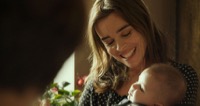 Marcelle Lean picked a real winner for her Cinefranco 2019 with this film about France’s adoption process. The adoption process is shown here in all its complications and complexity with a whole lot of people involved in finding an adopted baby a good home. PUPILLE unfolds non-chronologically as fiction though one can be sure that director Herry has done lots of research. The story follows Theo, abandoned by his biological mother (Leila Muse) as Social Service strives through many applicants to find him a suitable and loving home. The film reveals the various emotional states of everyone involved in the process from the mother, to the accepted new adoptive mother (Elodie Bouchez), to the social workers (3 of them) to the man (Gilles Lellouche) who looks after Theo before delivered to his final home. Director has created both a heart warming and heart wrenching drama that will tug at ones emotions. So, bring lots of Kleenex. A few of the film’s parts are out of place like the emotional drama between two of the workers. But given the film’s content, good intentions and research, PUPILLE deserves full marks. (It has also 100% rating on Rotten Tomatoes at time of writing.) PUPILLE is the term given to the ward while under the care of France’s Social Services. The film returns ones faith in the human race.
Marcelle Lean picked a real winner for her Cinefranco 2019 with this film about France’s adoption process. The adoption process is shown here in all its complications and complexity with a whole lot of people involved in finding an adopted baby a good home. PUPILLE unfolds non-chronologically as fiction though one can be sure that director Herry has done lots of research. The story follows Theo, abandoned by his biological mother (Leila Muse) as Social Service strives through many applicants to find him a suitable and loving home. The film reveals the various emotional states of everyone involved in the process from the mother, to the accepted new adoptive mother (Elodie Bouchez), to the social workers (3 of them) to the man (Gilles Lellouche) who looks after Theo before delivered to his final home. Director has created both a heart warming and heart wrenching drama that will tug at ones emotions. So, bring lots of Kleenex. A few of the film’s parts are out of place like the emotional drama between two of the workers. But given the film’s content, good intentions and research, PUPILLE deserves full marks. (It has also 100% rating on Rotten Tomatoes at time of writing.) PUPILLE is the term given to the ward while under the care of France’s Social Services. The film returns ones faith in the human race.
Trailer: https://www.youtube.com/watch?v=9bx3DnPLI6U (ver francais)
VENICE N’EST PAS EN ITALIE (France 2018) ***1/2
Directed by Ivan Calbérac

Based on the 2015 novel ‘Venice is not in Italy’ by Ivan Calbérac, VENICE N’EST PAS EN ITALIE (English title VENICE CALLING) follows the coming-of-age adventures of teen math geek Emile who lives with his struggling but over-loving parents in a caravan falls for ultra wealthy girl in his class. When she invites him to her orchestra performance in Venice, he promises to attend, if his parents can afford it. They agree to let him attend but decide to come along as well, together with caravan in tow and his elder cool brother who suddenly shows up. VENICE has all the charm and nuance of a French comedy that is both funny and entertaining with a message to boot. The film’s best part has the mother giving Emile a smack across the face for being ashamed of her. The truth is almost every child is ashamed of their parents for some reason or other, for being not rich enough, for dressing odd, for showing affection in public etc. At the same time, the boy grows up learning more about life (including sex, courtesy of his elder brother) and what counts in life. The film is a total delight!
Trailer: http://www.allocine.fr/video/player_gen_cmedia=19583589&cfilm=241649.html (ver Fr)
- Details
-
Category: Cinéma - Movies
-
Published: Tuesday, 05 November 2019 21:47
-
Written by Gilbert Seah
The Toronto Reel Asian Film Festival 2019
The Toronto Reel Asian International Film Festival® is a unique showcase of contemporary Asian cinema and work from the Asian diaspora. Works include films and videos by East, South and Southeast Asian artists in Canada, the U.S., Asia and all over the world. As Canada’s largest Asian film festival, Reel Asian® provides a public forum for Asian media artists and their work, and fuels the growing appreciation for Asian cinema in Canada.
The (23rd) Reel Asian International Film Festival runs from November the 7th to the 15th, 2019 in downtown Toronto.
Capsule reviews of selected films (as recommended by the ReelAsian publicist) follows below this article.
For more information and a full schedule of screenings, please check its website at:
http://www.reelasian.com/festival/
Capsule Reviews of Selected Films
COME DRINK WITH ME (Hong Kong 1966) ****
Directed by King Hu

Undeniably the best film to be shown at the Asian Film Festival this year and free as well, COME DRINK WITH ME a must-see if you have not already seen it. This is the film that sprouted the wuxia swords sagas and the film that catapulted its director King Hu to fame. King Hu went on to make DRAGON INN and A TOUCH OF ZEN followed by classics like the stunning RAINING IN THE MOUNTAIN and THE LEGEND OF THE MOUNTAIN. COME DRNIK WITH ME,a Shaw Brothers production stars starlet Cheng Pei-pei as Golden Swallow, 20 at the time of the making of the film, as the swords lady extraordinaire. Golden Swallow’s task is to free her captive brother from bandits led by an evil Abbott. It all sounds terribly delicious. All the elements of a classic sworsdsaga are present, including a fight at an inn, unparalleled sword fights and incredible acrobatics. COME DRINK WITH ME influenced Ang Lee’s CROUCHING TIGER, HIDDEN TIGER that also featured Cheng as an elderly fighter named Jade Fox. Free screening November 1st at the Innis Town Hall at 8 pm.
Trailer: (unavailable)
GYOPO (South Korea/Canada 2019) **
Directed by Samuel Keehoon Lee
GYOPOS is abut gyopos. A “gyopo” is someone of Korean descent who has been raised abroad. The film opens impressively in black and white, probably because director Lee draws his inspiration from Jacques Tati’s black and white comedies like PLAYTIME. Samuel Kiehoon Lee’s first feature tells the intimate stories of gyopos who have made a journey to Korea, only to find themselves outsiders in the country that gave birth to their parents. Lee weaves together vignettes from a diverse band of well-educated 20 and 30-somethings as they get drunk, laugh, fall in love, and get into fistfights over a 24-hour period in Seoul. sounds better than it is! Instead of nuance, heart, humour, and snark, Gyopo’s portrait of the gyopo experience is misguided, non-directional confusing and eventually disorienting. Lee could have down a much better job with fewer characters and concentrate n maybe just one or two and tacked their passage of coming-of-age. Lee shows potential but it is wasted potential in the case of this film.
Trailer: https://vimeo.com/282166133
LOVE BOAT TAIWAN (Canada/Taiwan 2019) ***
Directed by Valerie Soe

Thee is no boat in LOVE BOAT TAIWAN. That is the nickname given to the Taiwanese program designed to attract young Taiwanese and Chinese visitors from abroad to spend a few weeks in Taiwan to be immersed in Taiwanese culture. A typical daily routine involves a flag raising ceremony, Mandarin language lessons, Chinese brush painting and martial-arts training before being taken on a bus for an afternoon excursion, often to visit Chang-Lei Check monuments. The program is not totally successful as the young ones , being youthful are rebellious are out for a good time, often breaking curfew to go partying. The film is comprised of interviews of past visitors who lend both their humour and points-of-view on what they experienced. Director Soe knows that her doc is to be taken in with a grain of salt, resulting in an entraining while enlightening documentary on her bananas. These visitors are called bananas as they are yellow on the outside and white on the inside.
Trailer: https://www.youtube.com/watch?v=XzEZ1glkebo
THE MIRACLE OF CRYBABY SHOTTAN (Japan 2019) ***
Directed by Toshiaki Toyoda
Shogi is the name of Japanese chess. This film tells the true story of shogi (Japanese chess) player, Shoji “Shottan” Segawa. Despite consistent dedication, Shottan (Ryuhei Matsuda) fails to go professional by the time he turns 26, permanently forfeiting his chance according to the game’s strict rules. Shottan does not abandon his dream and continues as a top amateur until, at 35, he makes an unprecedented bid to go professional. MIRACLE is a feel good crowd pleaser that works best when the unexpected occurs - showing that life can dish up unexpected twists. And that is the miracle and wonder of it all. The film is inspired by the director’s
personal shogi experience (he trained to go professional as an adolescent). This tale of late-blooming self-realization is an inspirational study of perseverance against all odds. Both a sensitive character study a fascinating glimpse into the closed world of shogi, director Toyoda’s film though based on the chess player’s biography does not feel like one. A bit lengthy at over 2 hours, the film could be improved if edited more tightly. Excellent camerawork too!
Trailer: https://www.youtube.com/watch?time_continue=3&v=X_lJlO172zc
WE ARE LITTLE ZOMBIES (Japan 2019) **
Directed by Makakoto Nagahisa

WE ARE LITTLE ZOMBIES is a bad and boring film but at least off to a promising start for a while before unfortunately fizzling out. This is not a film about zombies though a few references are made to them. It is a story of 4 children Hikari, Ikuko, Ishi and Takemura with bad parents. The parents have died in different ways but the four orphaned children who meet in a Tokyo crematorium relate their stories under the narration of the first boy. The first story is the most interesting. Before one can get attached to this child, the film shifts to the next. The disorientation is only matched by another less interesting tale of childhood angst. The film, a long haul, is deliberately made to feel like a video game (with fast edits, fast motion and jump cuts) which soon loses its lacklustre. The kids (three assorted boys and a girl) deliberately made to be un-cute by Nagahisa eventually form a band and sing mediocre songs. The point to all this is that it is better to stay alive but there are better ways to get this message across.
Trailer: https://www.youtube.com/watch?v=O_-9wNeRLSs
YELLOW ROSE (Philippines/USA 2019) **
Directed by Diane Paragas

Rose Garcia (Eva Noblezada) is a young Filipino teen going to school with dreams of becoming a country singer. She is quite good, evident from the songs that she sings, and she goes under the wings of famous country singer Dale Watson (playing himself). But trouble brews when her mother, Priscilla (Princess Punzala) gets arrested and faces deportation back to the Philippines for being an illegal alien. The lazy script fails to explain how they got to the U.S. and why Rose’s aunt and husband is wealthy (supposedly legal) American citizens. What is most corny is the use of songs to to state the heroine’s current emotional state. When Rose is down, for example, she croons the lyrics: “You can take the roof from above my head, but you can’t take my freedom away…” For lack of a credible happy ending, the film does best with Rose performing one of her songs on stage, again with the corny lyrics telling the audience of Rose’ s new state of affairs: “You can’t get the best of me. I ain’t going down.’ I’ll be standing tall’.
Trailer: https://www.youtube.com/watch?v=dTEGWKFO9Jk
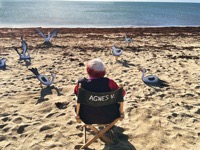





 Marcelle Lean picked a real winner for her Cinefranco 2019 with this film about France’s adoption process.
Marcelle Lean picked a real winner for her Cinefranco 2019 with this film about France’s adoption process.




